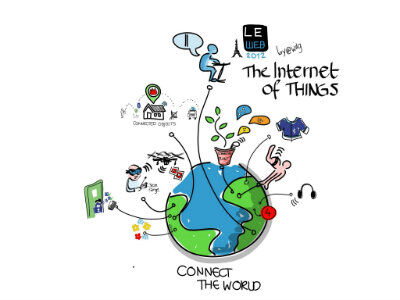

As companies of all shapes and sizes create new devices intended for the Internet of Things, one sticking point has become increasingly clear: there is a significant lack of uniform standards. If the whole idea behind the IoT is to create a world where everything is able to communicate with each other, this obstacle is perhaps one of the biggest barriers of all. For example, if a company that develops smart clothing is different from a company that develops smart home technology, the chances of their products communicating are minimal. That’s because different devices will often use different communications protocols, resulting in a lack of interoperability and an experience that’s far from seamless for customers.
One solution to this problem is to create hub devices, allowing the user to control a variety of different IoT devices from one central gadget. But even this solution has some significant hurdles. Companies want to be the preferred choice of IoT gatekeeper, so their hub controls would only work with specific devices and not their competitors. This results in a fractured market where full IoT integration becomes extremely difficult. As long as no firm standards are established, a divided IoT market should be expected.
In addition to a lack of standards, the IoT also has to deal with increasing security and privacy concerns. In the wake of major data breaches at numerous businesses in the past few years, consumers are warier than ever about what information is sent over the internet. Now imagine a world where everything we use is connected to the internet. Consumers want to make sure that data is kept safe and protected, and considering the variety of different IoT devices, there’s still a long way to go to meet those expectations. With the growth of the IoT, more vulnerabilities have been introduced. Whether through sensors on industrial equipment, wearable devices, or smart cars, businesses and individuals have also expressed concerns over what data third parties could have access to, which is a major privacy issue.
Speaking of data, much of the Internet of Things runs off of big data. While many assume the vast volume of data is holding further IoT progress back, the real culprit is the lack of quality data. This problem can be attributed to a number of reasons, one of the biggest being the high cost of collecting high quality data. Placing sensors in objects costs money, and those sensors need to be durable and reliable, which costs extra. Battery life is another issue, since current batteries have severe limitations and shortcomings. Only through improved sensors will higher quality data be collected, which will in turn lead to a more responsive and accurate Internet of Things.
The above issues are only scratching the surface of the challenges that still await the IoT. Debates over data ownership are as heated as ever, and technological questions remain about networks and cloud computing capacity with so much data being transmitted. As extensive as these problems are, there is still plenty of confidence that the Internet of Things will become a reality in the not too distant future. Companies and entrepreneurs can see the potential of the IoT and are working feverishly to create that next must-have device that can realize that potential. The IoT is set to revolutionize the world, and these obstacles may only represent a speed bump along that road.